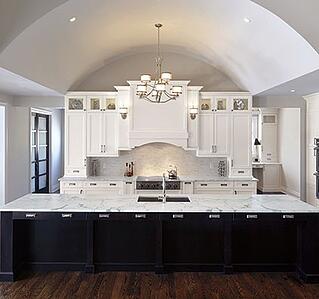If you are about to undergo a kitchen remodel, chances are you’ve heard about the “work triangle” or work stations. The concept of the work triangle, although outdated, illustrates some fundamental kitchen design functions that affect flow and usability.
Whether your kitchen in is U-shaped, L-shaped, straight, or another layout – chances are that there is a triangle at its core.
What is a work triangle?
The whole “work triangle” concept was developed in the 1940’s during a time when kitchens were fairly small and appliances were large.
Kitchens have 3 primary work areas: the stove, the refrigerator, and the sink. The “work triangle” consists of an efficient arrangement of these 3 work stations.
A prime kitchen design will have the distances between each space comfortable. If the distance is too short, the work area will be cramped. If too far, the cook will become worn out from scurrying between them.
Some rules of the work triangle:
- A good rule of thumb is that the three legs of the triangle should add up to between 12 and 26 feet.
- The triangle should not cut through an island or peninsula by more than a foot.
- Each leg should measure between 4 to 9 feet.
- No major traffic patterns should cross through the triangle.
Often, of the three components of this work triangle, the refrigerator should be located at the outer corner for easy access. This is because people who aren’t directly involved in cooking often need to access the kitchen, and majority of time they need to access the refrigerator.
Remember, the work triangle it not a “law”, but a suggestion for space planning and efficiency in the kitchen. It is something that should be taken into consideration when planning the layout of your dream kitchen.
Why should you think about it?
Although the work triangle is a 70-year old concept for your kitchen layout, keeping a certain amount of space between your main work stations is important.
When it comes to designing a new kitchen layout, think back to your old layout:
- What did you like?
- What didn’t you like?
- Where did you need more space?
Answering these questions to yourself will help you in your decisions. In addition, you can stop into your local GNH Lumber and a professional can help answer any questions you have. They can also help you figure out a layout design that will work perfect for your space and your needs.

 Posted by Edward Curtin on August 28, 2020
Posted by Edward Curtin on August 28, 2020 



